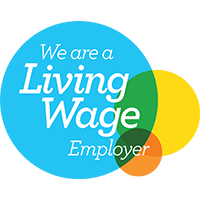
Jeff has been overseeing our entire bread production over at the bakery at 50a Bridge Street, so we caught up with him to discuss his process, inspirations, and tips for any keen home-bakers!
“My starter is a 100% rye starter, which was created at the beginning of lockdown last year – so it’s around a year and a half old! I opted to create a rye starter as rye flour has more nutrients that lend to more active fermentation when compared to white or wholewheat starters.
Since we’ve been using Wildfarmed flour, I’ve noticed that our sourdough dough not only feels and looks better, but we’re producing breads that have a deep, savoury taste profile – one I haven’t experienced anywhere else. ”

“The inspiration for the ‘Jaunty Country Loaf’ comes from bakeries I discovered throughout lockdown. Tartine and The Mill in San Francisco, as well as BReD in Canada are three artisan bakeries that I admire, which all have a “country loaf” as their main offering.
The bread itself is based on the ‘pain de champagne’, a French bread that’s typically made using a blend of white and wholewheat flour that can be found all across France.”

“The first thing I do every morning is check to see if the leaven is bubbly and active. When I can see that it’s ready to go (and the smell is not too acidic), I know it could be the start of a good dough.
When I’m folding, I look to develop the strength of the dough further. Bubbles that are developed during this process also signal good fermentation, and can help indicate when a dough is ready to be shaped.”

“The bread is ready to remove from the oven when it is a deep, golden brown. When you tap the bottom of the loaf, it should sound hollow. This means it is cooked and airy. Bubbles on the crust of the dough (trapped carbon dioxide) show a slow, cold ferment. A sourdough loaf is actually best when left to rest and fully cool.
When baking, I’m looking for maximum “oven spring”, which is essentially the amount the dough rises in the oven whilst baking. The steam released by the loaf itself, combined with the steam injected manually by the baker help the dough to rise. A deep, decisive slash across the top of the loaf helps the dough to expand when the steam is released, and creates the “ear” that all bakers hope to achieve when baking a sourdough loaf.”

You can find our loaves on the shelves at our bakery on Bridge Street, or to be enjoyed as part of many of the dishes that make up our menus served at both our Bridge Street and Northgate Street shops.



